Sequence viewing > Light & Lighting - Resource - ©
Lloyd Godman
Light in Photography - LIGHTING - Sunlight - Effect of Time
of day - Moonlight
Moonlight
Using
moon light can easily produce photographs. Although the light
levels might be too dim for us to see colour, with an extended
exposure the camera with either film or a CCD will record a surprising
amount of colour in the scene. |
|

|
| In
fact the results can be so good, that unless we consider the light
levels, how we frame the scene and the effect of the long exposure
the resulting image might seem deceptively as though it was taken
during the day. |
|

|
| This image was taken in the moon light, and you can
see the light in the building in the background. |
|
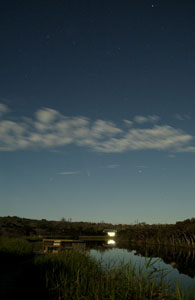
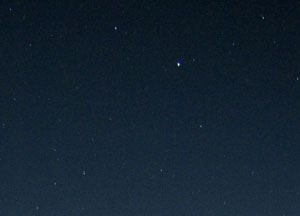
However if
we look in the sky we can see the stars in the sky. |
In
this image of the moon rise the image looks like an image that
might have been taken during daylight after sunrise. |
|
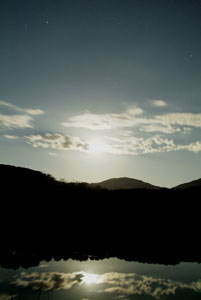
|
| However
in this image the exposure is very long (several minutes) - we clearly
see the stars and the clouds have moved during the exposure creating
a fascinating blurred motion. |
|
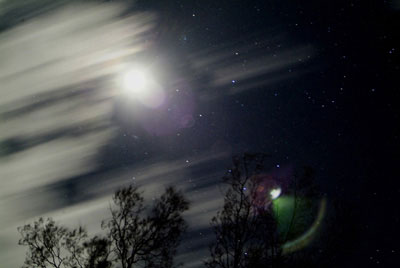
The
small light with the green light in the lower right is not a UFO
- but is caused by light refraction from the direct rays of the
moon. This acts in exactly the same manner to photographing directly
into the sun. |
 |
This exposure has been made in the moonlight - the tree in the foreground has been painted with light. |
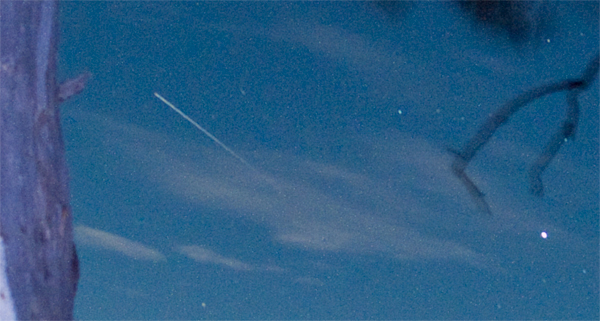 |
In this detail from the image above the stars have recorded but also an air plane, seen on the left. |
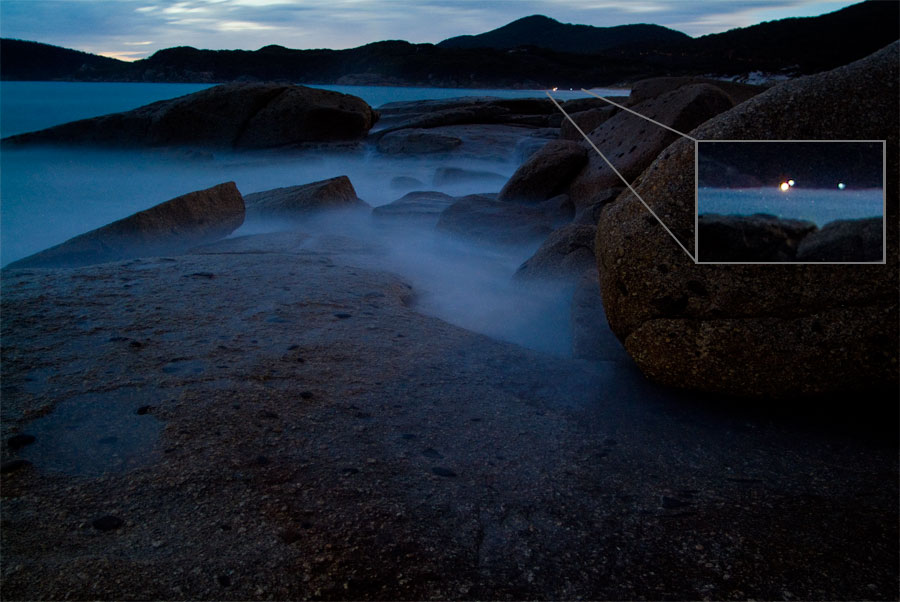 |
Extraneous lights will show up dramatically in image shot at this time of day.
Aberrations like this can be cloned out in photoshop
|
The
following exposures are a guide which might be useful. Set your aperture
to f8
| |
100 ISO |
200 ISO |
400 ISO |
800 ISO |
1600 ISO |
| Full Moon |
8 Mins |
4 Mins |
2 Mins |
1 Min |
30 Sec |
| 3-4 days after/ before |
22mins |
11 Mins |
5 Min 30 Sec |
2Min 45 Sec |
1 Min 20 Sec |
| 7 days after/ before |
1Hr 30mins |
45 Min |
22 Min |
11 Min |
5 Min 30 Sec |
| 10-11 day
after/ before |
10Hrs |
5 Hrs |
2 H.30 Mins |
1Hr 15Mins |
45 Mins |
See
the dynamic form below for different aperture and film settings. The
exposure times are rough starting points, the subject surface (reflection),
ambient light and other factors will effect your exposure. When in doubt,
bracket.
Reciprocity
Failure is a problem that occurs with film's ability to evenly measure
light during long exposures. The characteristics of film is that during
an exposure it is initially very sensitive to light but as exposure
time increases the film's ability to record light is diminished. So
what a light meter may tell you should be a 1-minute exposure, for a
particular film that exposure may actually need to be 8-minutes.
Black and White
films are effective more by the reciprocity failure than color or slide
film. Check your film data sheet for it's characteristics and tables.
http://home.earthlink.net/~kitathome/LunarLight/moonlight_gallery/technique/reciprocity.htm
Want to learn more? - do a workshop or one on one with Lloyd Godman
|